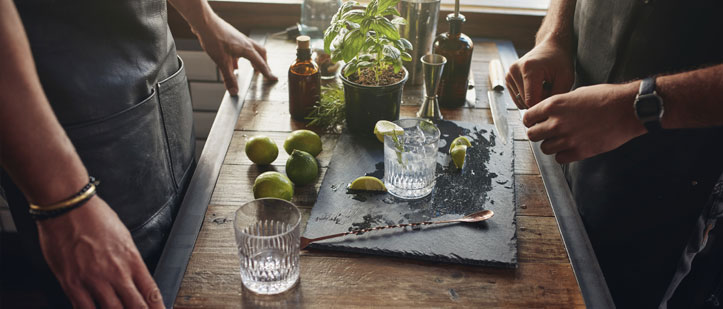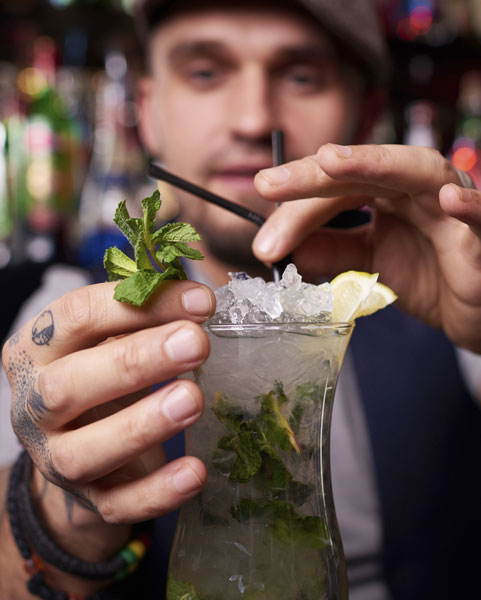We often talk about American craft brewing as a movement, but when we do we usually undersell the notion. The earliest craft beer pioneers definitely lit the fuse for a full-scale revolution, but it’s a revolution that has long since expanded beyond the confines of its own category. For instance, few would argue that cider — still less than 1 percent of the overall beer market, according to the latest IRI data — would be having its moment without the smooth path small, independent brewers have paved. And even fewer would assert that the craft spirits segment would even exist without those trailblazing efforts.
In a lot of ways, craft distilling is following a similar trajectory to craft brewing; the growth in the number of small spirits producers is exploding and they’re starting to chip away at macro-distillers’ market share (though indie spirits makers represent barely 2 percent of the spirits market at this point, as their segment is fairly nascent, relative to their beer counterpart).
The same entrepreneurial spirit that built the craft beer industry drives the founders of independent distilleries.
But that is pretty much where the comparisons end.
For every similarity between craft beer and craft spirits, there are multiple differences — well beyond ABV and the distilling process. The most significant among those is the competitive environment in which each movement emerged.
(MORE: We’re Witnessing a Renaissance in American Brewing)
Rage Against the Micro Machine
Think back about four decades when the first craft brewers — called microbrewers back then — produced their first batches. “Beer” meant one style: mass-produced yellowish lagers — loosely based on European pilsners — lacking most of the flavor-forward character of their overseas inspiration.
The early pioneers — be they Anchor Brewing’s Fritz Maytag, New Albion’s Jack McAuliffe or Sierra Nevada’s Ken Grossman — introduced American drinkers to alternatives when those drinkers didn’t even know such alternatives even existed. And, as such brews became available to a larger and larger swath of the legal-drinking-age American population, it changed the course of the beer market forever, ultimately to the tune of 12 percent market shareOpens in new window (and counting), according to recent statistics from the Brewers Association.
In a sense, drinking craft became a way to rage against the macro machine, a way of saying “we want something more than what your marketing tries to convince us is flavorful beer.”
That’s not quite the case with craft spirits. The companies that would be the spirits equivalents of macro-brewers — Diageo, Pernod Ricard, Brown-Forman and Beam Suntory, to name the biggest — own many of the most iconic whiskey brands. Not only is Diageo responsible for about one-third of all the Scotch Opens in new windowwhisky volume coming out of Scotland, it also is the company behind the highly prized Orphan Barrel series of fine bourbon and rye whiskeys. And, sure, Brown-Forman is perhaps best known as the owner Jack Daniel’s, but it’s also responsible for Woodford Reserve.

Maker’s Mark has, for the past 35 of its 60-year existence, been through a series of mergers and acquisitions that ultimately resulted in the formation of Beam Suntory.
It’s hard to argue that the spirits-drinking public was as much in need of a flavor revolution as beer drinkers were. The large spirits companies’ businesses were already diversified enough to appeal to all segments of the market. In addition to the mass-marketed mainstream and budget brands, their portfolios include higher products that occupy a space that many would deem “craft.”
“I don’t think you can out-craft them,” says Brett VanderKamp, president and co-founder of New Holland Brewing. New Holland brings a valuable perspective to the table, as it’s also a distiller. In addition to well-regarded brews like Dragon’s Milk bourbon-barrel stout, Mad Hatter Midwest IPA and the Kölsch-style Full Circle, New Holland also makes whiskey, gin, vodka, rum and liqueurs. A growing number of craft brewers, like New Holland, have been dabbling in distilling.
“[Large spirits producers] are very far ahead in the techniques that they’re using and in exploring different flavor profiles,” VanderKamp continues. “If you look at the quality and craftsmanship there, it’s very high.”
In other words, no one dares tell the folks at Maker’s Mark distillery that there isn’t a “craft” in the production of their storied bourbon.
(MORE: These Indie Brewers Know How to Rock Facebook)
Deep Sense of Ownership Among Craft Beer Lovers
Another major distinction between the two beverage-making traditions is that recent spirits growth trends have been the reverse of those for beer. The overall beer market has been flat to downOpens in new window about a percent in recent years, despite craft beer’s double-digit growth. Spirits volume, on the other hand, has been growing between 2 and 3 percent annually. The craft spirits segment has brought a great deal of excitement and innovation to the overall category, as well as a host of dynamic personalities and creative artisans. But a lot of its recent growth has been driven by brands owned by large producers. And the surge owes more to the premiumization trend — aka “trading up” to higher-end, higher-quality products — than it does to the wave of small, startup distilleries. Most of the volume to which spirits drinkers are trading up comes from the portfolios of the macros (for lack of a better term).
The premiumization trend has enabled a craft spirits segment to emerge; the existence of such a segment didn’t initiate the trend.
In the past year and a half, we’ve witnessed a handful of fairly high-profile transactions involving a macro brewer buying a small, independent craft brewer. And, as anyone who spends even the shortest amount of time on Twitter or Facebook will know, craft drinkers are a pretty passionate bunch and often have rather strong opinions when a large multinational brewer acquires or invests significantly in a favorite local or regional craft brewery. Some even refuse to continue drinking that brewery’s beer before the ink dries on those deals.
Meanwhile, the most devout spirits fans — particularly whiskey aficionados — seem to give large, global corporations a pass when they drink the higher-end, boutiquey products in their portfolios. The fact that multibillion-dollar corporations with multimillion-dollar marketing budgets owns their favored brands doesn’t seem to faze the majority of spirits consumers. Social media was relatively quiet in the spring of 2015 when Bacardi announced that it was acquiring Angel’s Envy bourbon. Few batted an eye. (Admittedly, transactions involving a company the size of Bacardi are few and far between in spirits).
The more passionate response from craft beer drinkers is rooted in a sense of ownership they have in their favorite brews, as well as the independent companies that produce them. That’s not quite as pronounced in the spirits realm.
“I don’t think it’s as localized,” VanderKamp observes. “People don’t necessarily think, ‘This is my hometown distillery.’ I know there are a lot more popping up and that could change, but I don’t get a sense that it’s as local-driven, like, ‘My town’s got to have a distillery right now.’”
What Makes Craft “Craft”
Indeed, it could change. For the past few years, I’ve attended both the Craft Brewers Conference and the much newer American Craft Spirits Association’s (ACSA) convention with the same regularity. The latter event is far smaller than the former, but it’s growing rapidly. And though there are more differences than similarities between their respective memberships, the ACSA’s debates and votes related to self-definition bear a striking resemblance to the Brewers Association’s own proactive efforts to hone what exactly it means to be a craft brewerOpens in new window. But the big X factor right now is how drinkers actually translate that definition. Craft brewers and their supporters are, for the most part, on the same page about what makes craft, craft.
Spirits drinkers aren’t quite there yet.
In its Craft Spirits Omnibus Survey, Nielsen asked participants, “Which of the following types of spirits, if any, have you, or anyone in your household, purchased in the past 12 months?” Thirty-one percent said “mainstream spirits only,” while 13 percent responded that they had bought a combination of mainstream spirits and craft spirits. Only 2 percent said they purchased craft spirits only.
I think that 13 percent possibly could be a bit higher and that 2 percent a bit lower, because the definition of craft is still rather nebulous for the general public. It has yet to achieve the crystal clarity that makes beer drinkers so vocally passionate about what they’re drinking and who’s making it.
CraftBeer.com is fully dedicated to small and independent U.S. breweries. We are published by the Brewers Association, the not-for-profit trade group dedicated to promoting and protecting America’s small and independent craft brewers. Stories and opinions shared on CraftBeer.com do not imply endorsement by or positions taken by the Brewers Association or its members.


Share Post